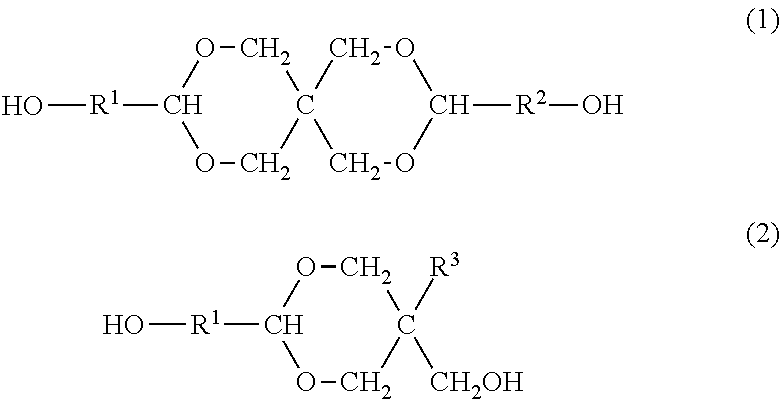Optical lens
a technology of optical lenses and lenses, applied in the field of optical lenses, can solve the problems of poor moldability, low product quality, high material cost, etc., and achieve the effects of low abbe number, high refractive index, and good moldability
- Summary
- Abstract
- Description
- Claims
- Application Information
AI Technical Summary
Benefits of technology
Problems solved by technology
Method used
Image
Examples
example
[0043]The invention will be described in more detail with reference to examples below, but the invention is not limited in scope thereof by the examples.
[0044]The evaluation methods of the polyester resins and the optical lenses used in the examples are as follows.
Evaluation Methods of Polyester Resin
(1) Resin Composition
[0045]The ratios of the ethylene glycol unit, the other diol unit and the naphthalenedicarboxylic acid unit in the polyester resin were calculated from 1H-NMR measurement. The measurement apparatus used was Model JNM-AL400, produced by JEOL, Ltd., and the measurement is performed at 400 MHz. The solvent mainly used was deuterated chloroform.
(2) Glass Transition Temperature (Tg)
[0046]The glass transition temperature of the polyester resin was measured with DSC, Ta-50WS, produced by Shimadzu Corporation, in the following manner. Approximately 10 mg of the polyester resin placed in an aluminum unsealed vessel was heated to 280° C. at a temperature increasing rate of 20...
PUM
| Property | Measurement | Unit |
|---|---|---|
| thickness | aaaaa | aaaaa |
| temperature | aaaaa | aaaaa |
| Abbe number | aaaaa | aaaaa |
Abstract
Description
Claims
Application Information
 Login to View More
Login to View More - R&D
- Intellectual Property
- Life Sciences
- Materials
- Tech Scout
- Unparalleled Data Quality
- Higher Quality Content
- 60% Fewer Hallucinations
Browse by: Latest US Patents, China's latest patents, Technical Efficacy Thesaurus, Application Domain, Technology Topic, Popular Technical Reports.
© 2025 PatSnap. All rights reserved.Legal|Privacy policy|Modern Slavery Act Transparency Statement|Sitemap|About US| Contact US: help@patsnap.com



